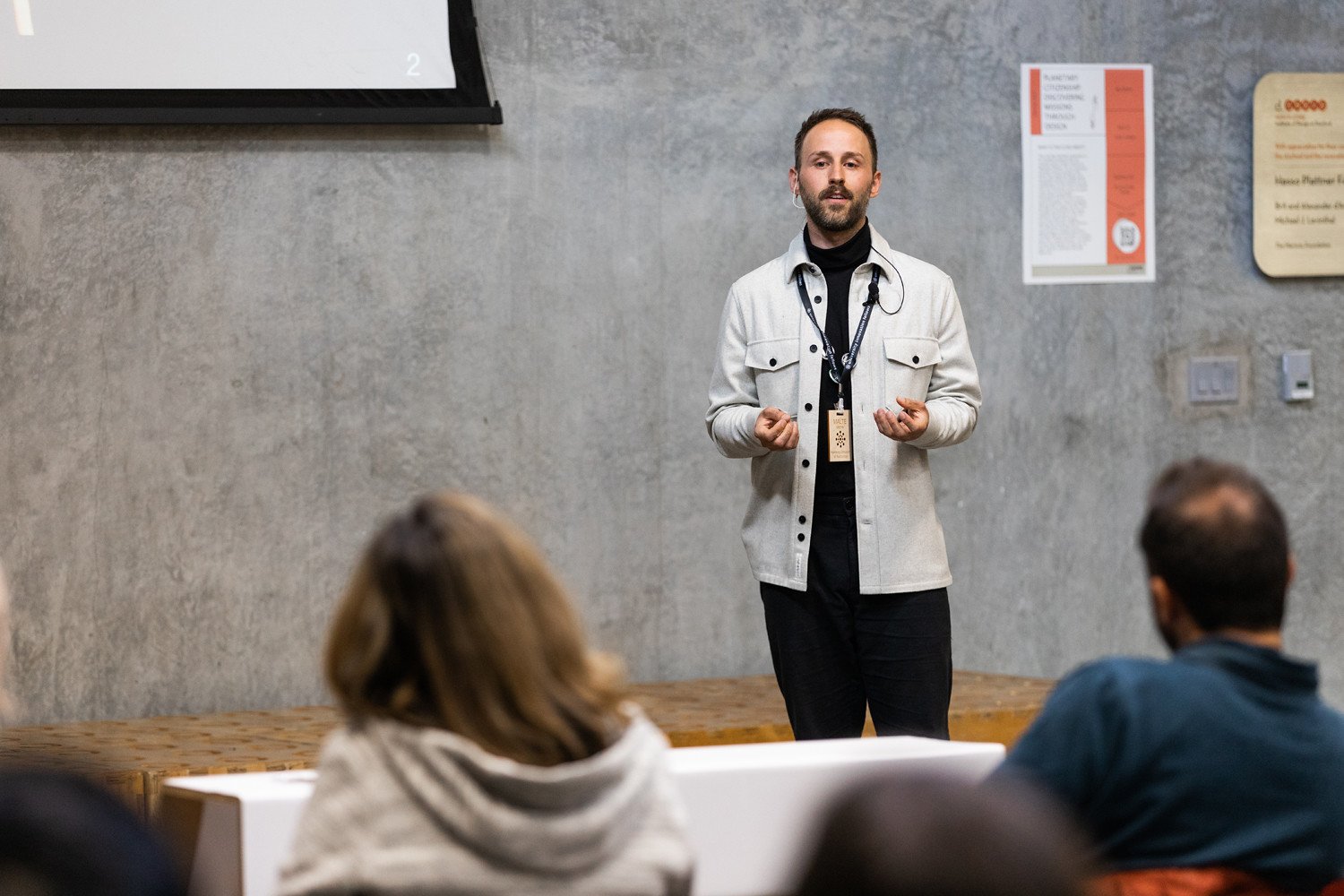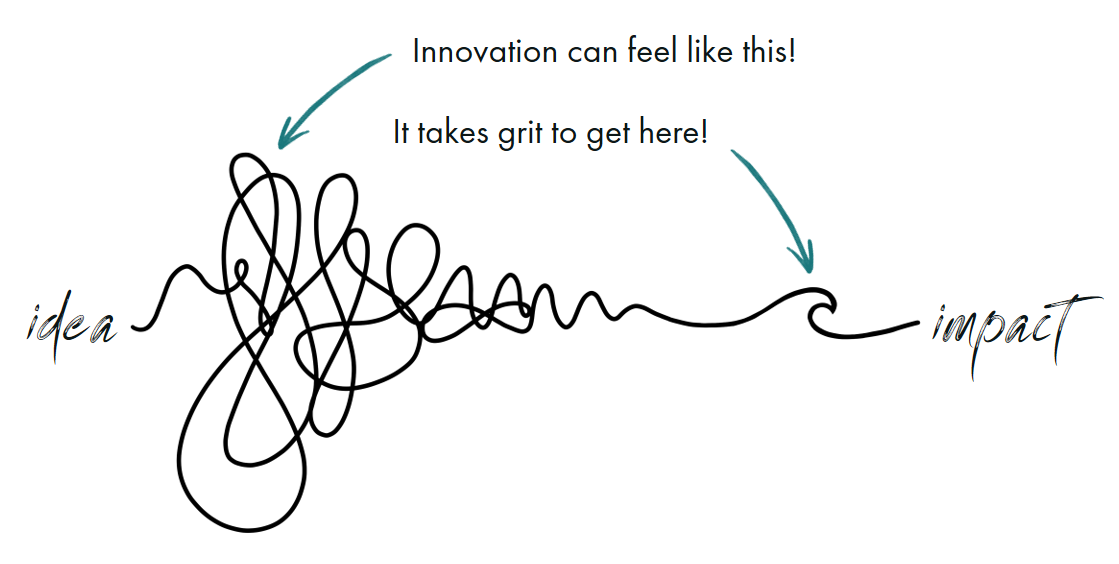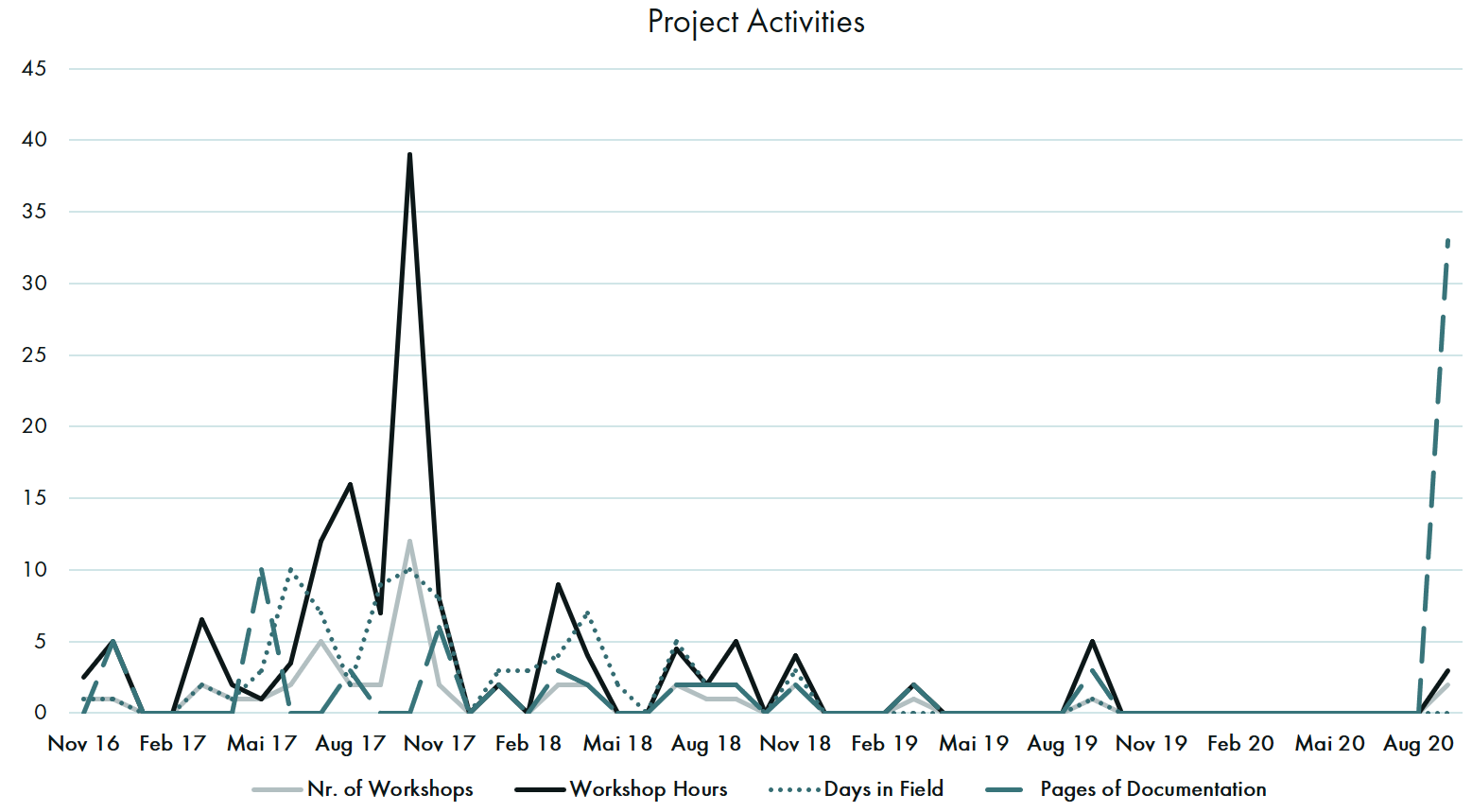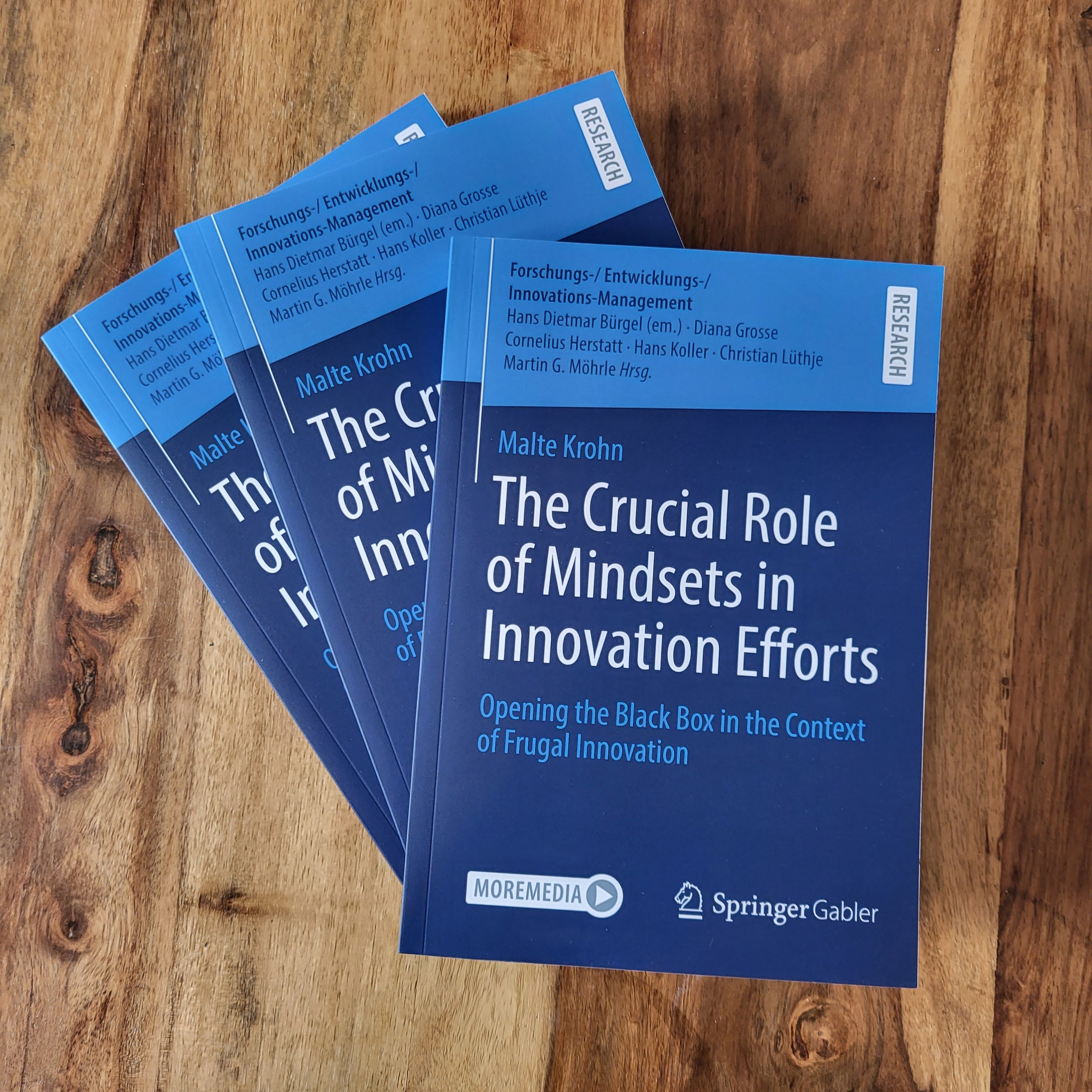
THE
Innovation Mindset
Matters
and here is why…
Article written by Dr. Malte Krohn, February 16, 2023
10 min. read time
WHY DO WE NEED TO TALK ABOUT mindsets in innovation?
I know, Innovation is quite a big word, and it can mean many things to different people. One thing, however, I am entirely sure of is that we can’t hope to create a more sustainable future without continuing to innovate! To bring some more clarity into the vast world of definitions, contexts, and agendas that surround the word innovation, I will share my favorite framework with you.
Following the work of Kenneth B. Kahn, I believe that a holistic understanding of innovation needs to incorporate three perspectives: innovation as an outcome, innovation as a process, and innovation as a mindset. In fact, I spent more than four years of my life enriching this idea with empirical data in my doctoral thesis, published with Springer Nature as The Crucial Role of Mindsets in Innovation Efforts.
The Triad View on Innovation
Let’s have a closer look at these three perspectives:
Innovation as an outcome: Probably the most self-evident viewpoint. Looking at innovation from this perspective answers the question, which kind of new products, services, or business models will make your organization future-proof?
Innovation as a process: If you are responsible for innovation efforts at your organization or ever tried to bring an idea into the world yourself, you might also be familiar with the idea of innovation as a process. Which tools, actions, and milestones will guide you in turning fuzzy ideas into something that offers actual value?
Innovation as a mindset: Lastly, being creative and coming up with wild ideas is only the beginning of an innovation journey – a journey that can be exhausting and full of obstacles. Which mindset helps you to stay motivated and optimistic in finding solutions together rather than reasons why things might not work out?
Because not having this mindset can have dire consequences for ideas…
Innovation Gone Wrong
Let me share a personal story with you. My doctorate was industry-based, and I worked with a multinational German company, which is a worldwide market leader for electronic components and solutions in the industrial sector. Like many companies in Germany, its market position was mostly based on technology-driven innovation – and this strategy worked for German companies for many decades.
However, the world market gave rise to new competitors – competitors that provided excellent quality at very affordable prices. A prominent approach to developing these kinds of products is frugal innovation. Dr. Timo Weyrauch, a former doctoral student at the institute I also conducted my research at, defines frugal innovations as innovations that are concentrated on core functionalities, have a suitable performance level, and significantly reduced costs. And this is exactly what we aimed for!
Thrilled by this opportunity to secure a strong position in the market, an inspired team of innovators and I went out to form an international product development team, do customer research in China, and develop first prototypes using design thinking approaches.
However, soon enough, it became evident that actually realizing the ideas developed in the early project phases would require serious and ongoing efforts. Several critical stakeholders lost their supportive mindset for frugal innovation in face of these decisions. Project activities decreased steadily, and the project, unfortunately, did not result in the new product family we hoped for.
As you might imagine, many innovation projects follow this path, and Prof. Abbie Griffin suggests that high-quality innovation journals estimate new product development failure rates around 40%.
This also guides us to another crucial feature of innovation as a mindset and innovation in a wider sense. While some folks in an organization might be willing and able to turn a wild idea into reality, others might become opponents to that idea and turn into an innovation barrier themselves! We can determine an innovation mindset on the individual level, but innovation is a team sport, after all.
If you take a more academic approach, you might want to check out Prof. Hans Georg Gemünden’s promoter model for innovation. If you are more hands-on, you might decide to work with David Kelley’s Ten Faces of Innovation. Whatever you do, actively include different perspectives in your innovation efforts and closely manage your stakeholders’ innovation mindset!
For any innovation project, I believe it is crucial to understand the wider context and look at it from different viewpoints to anticipate upcoming obstacles to turn them into opportunities.
Innovation is a team sport
The reasons for the outcome of my action research project are complex, and you can read more about them in my book. To me, however, it became clear that innovation requires ongoing action and support from all layers of the organization – the right mindset.
Crafting clarity with the Innovation Mindset Canvas
Maybe, you start to get an idea of why innovation means so many things to different people. It is complex and needs to be entered from different perspectives. Ideas need to be desirable from a customer’s perspective, feasible when it comes to their implementation, and viable for an organization.
Many stakeholders need to work hand-in-hand, and their mindsets are shaped by experiences and the company's history. What could potentially go wrong? Building on my doctoral research, I developed a tool to help innovators craft clarity around their idea concerning the human side of innovation, the Innovation Mindset Canvas.
Building blocks one to four support you in setting the wider context of an innovation project in terms of the outcome, process, and important stakeholders. This article already introduced these perspectives and the consequences of lacking ongoing innovative behavior in the form of engagement in and support of innovation efforts.
In building blocks five to eight, you dive deeper into the human side of innovation. What mindset do you need for your innovation efforts to be successful, and what trends and external development determine your situation? In contrast, what is the dominant mindset in your organization, and what was the organizational path that got you here?
From there, imagine experiences that you could craft to challenge your stakeholders’ mindsets, provocative perspectives that you could invite, and an environment that invites unlearning and relearning! Right, we are still practicing our innovation muscle, just with the goal of honing the innovation mindset among fellow innovators.
THE MINDFULSTARTUP.SCHOOL VISION
With mindfulstartup.school, I set out to put humans first in innovation and entrepreneurship. For many people, especially in technology-driven countries like Germany, innovation equals technology. While technology can play a crucial role in innovation, innovation is certainly more than that. Most importantly, I do not believe that technology alone will solve all the problems it caused in the first place.
If we want to apply innovation as an effective force for sustainable development, we also need to see it as a system of activities that humans do to help other humans. In that sense, innovation for the circular economy needs to be accompanied by a circular economy mindset, social innovation needs to be accompanied by a social innovation mindset, and so on.
And I believe that there are systematic ways of guiding innovators and innovation teams in reshaping their inner map of meaning around innovation!
Take your innovation game to the next level
This article offers a starting point for providing more clarity around the fuzzy issue of understanding innovation as a mindset and guiding your efforts in managing it more effectively. Building on the last paragraph's ideas and perspectives, I’m sure you can now handle a more concise definition of the innovation mindset. This is what I and my colleagues Dagmar Hattenberg, Norris Krueger, and Cornelius Herstatt developed during my doctoral research:
“We define an innovation mindset as the willingness and ability to intentionally create, introduce, apply, and support new ideas as an individual within a work role, group, or organization and continuously maintain volition to promote idea development along the innovation process to generate innovative outcomes.”
Since you now understand why the innovation mindset matters, are you ready to take your innovation game to the next level? Building on a clear understanding of what it takes to cultivate an innovation mindset, it's time to take action and fine-tune your approach alongside your team of innovators. By honing your innovation mindset and specifying your innovation challenges, you'll be better equipped to tackle sustainability, digitalization, affordability, and other critical issues facing businesses today.
Try framing your efforts with the Innovation Mindset Canvas building blocks and watch your team's creativity and ingenuity soar to new heights. And don't worry, you don't have to go alone! I'm here to support you every step of the way with my keynotes, workshops, and hands-on project consulting. So why wait? Start your innovation journey today by booking a free call to discuss the details of your challenges.
Resources
All resources are also directly linked in the text.
Kahn, K. B. (2018). Understanding innovation. Business Horizons, 61(3), 453-460.





